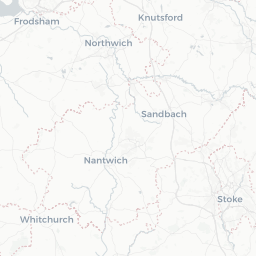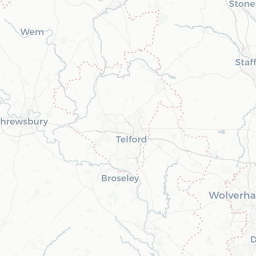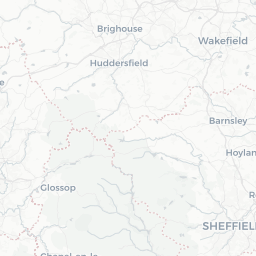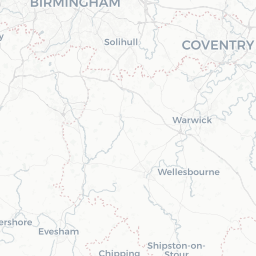PO4 (Southsea)
Portsmouth (PO4) Postcode Area
Southsea, along the southern coast of Hampshire, is a seaside neighbourhood known for its lively atmosphere and rich history. Just a stone's throw from Portsea Island and Portsmouth, it offers stunning pebble beaches and iconic attractions like South Parade Pier and Clarence Pier. The area boasts excellent transport links, with easy access to trains and buses. Residents enjoy a mix of independent shops, cafes, and restaurants, alongside green spaces like Southsea Common, making it an ideal spot for families and young professionals alike.
Overview
Southsea (PO4) postcode district is located in the ceremonial county of Hampshire, and is part of the Portsmouth postal town.
The PO4 postcode in Southsea, Portsmouth, is a vibrant area with a strong community feel. The average house price is £230,000, which is below the UK average of £288,000. The population density is notably high at 16,153.8 people per sq km, and the area has a diverse demographic profile, with 87.9% of residents identifying as White. The region also boasts a relatively high average salary of £28,917, compared to the UK average of £29,669.
Settlements within PO4 include:
Eastney, Milton
















People and Demographics
Demographics
The PO4 postcode is located in Hampshire and serves the town of Southsea, which is part of Portsmouth. The area has a diverse population, with 87.9% identifying as White, and smaller percentages of Asian (5%), Black (2.3%), and Mixed (3%) ethnic groups. The average age of residents is 40.8 years, slightly higher than the UK average of 40.7 years. This demographic mix contributes to a lively community atmosphere, particularly with the presence of students from nearby universities.
Unemployment
Percentage of people in Portsmouth PO4 who are classed as being unemployed at Census 2021.
An unemployment rate of 5% in Southsea PO4 is slightly above the UK average of 4.3%, indicating a moderate level of joblessness.
While some residents may face employment challenges, the rate still suggests a functioning local economy. Efforts to boost job opportunities could further enhance community stability and support the area's long-term growth.
Diversity
Percentage of residents in the PO4 postcode region who identify as white.
With 76% of residents identifying as White in Southsea PO4, this postcode has a modest level of ethnic diversity.
The presence of residents from various backgrounds enhances the community by introducing different perspectives and cultural experiences, contributing to a welcoming and inclusive neighbourhood.
Population Growth
Population growth means that the population of Portsmouth PO4 is increasing by 2% each year.
Across the UK, (England, Scotland, Northern Ireland and Wales), the average population grown from 2023-2024 is 0.66%.
Children
Are under 18 years old
20% of Portsmouth PO4 are under the age of 18 at the time of the Census 2021.
Southsea PO4 aligns closely with the UK average of 17.4%. This indicates a balanced mix of families and other household types, with amenities catering to both children and adults.
Retired
Are enjoying retirement
15% of Portsmouth PO4 are retired at the time of the Census 2021.
Southsea PO4 aligns closely with the UK average of 16%, a mixed community of working-age individuals and retirees. Local amenities are likely to be diverse, and cater to both younger and older residents.
Census 2021 Demographics
Who lives and works in PO4?
Analysing the PO4 population's characteristics, including age distribution and cultural diversity, provides valuable insights into the composition of the community.
Population
Analysing the PO4 population's characteristics, including age distribution and cultural diversity provides valuable insights into the composition of a local community.
Demographics
The PO4 postcode is located in Hampshire and serves the town of Southsea, which is part of Portsmouth. The area has a diverse population, with 87.9% identifying as White, and smaller percentages of Asian (5%), Black (2.3%), and Mixed (3%) ethnic groups. The average age of residents is 40.8 years, slightly higher than the UK average of 40.7 years. This demographic mix contributes to a lively community atmosphere, particularly with the presence of students from nearby universities.
Population Growth
Population growth means that the population of Portsmouth PO4 is increasing by 2% each year.
Across the UK, (England, Scotland, Northern Ireland and Wales), the average population grown from 2023-2024 is 0.66%.
Children
of Portsmouth PO4 are under the age of 18 at the time of the Census 2021.
Retired
of Portsmouth PO4 are retired at the time of the Census 2021.
Gender Ratio
51% female
Gender ratio in census data means the number of males for every 100 females in a population, helping us understand the balance between men and women in a specific area.
Age Distribution
are adults
Age distribution refers to how different age groups are spread within a population, showing the number of people in each age range. This helps understand the population's structure and potential needs.
Age Distribution
"Age Distribution by 5-year bands" in the Census 2021 breaks down the population into groups based on age ranges, each spanning five years (e.g., 0-4, 5-9, 10-14, etc.). This helps to see how many people fall into each age group, providing a clear picture of the age structure in an area.
Living Arrangements
"Living Arrangements" in the Census 2021 refers to people's relationship status and how they live with others. It includes whether someone is married, in a civil partnership, cohabiting as a couple, separated, divorced, or single, and whether they live with a partner, alone, or with others.
Legal Partnership
Legal partnership status of residents in the Portsmouth (PO4) district, offering insights into the diversity of relationship statuses in the area. This dataset classifies residents aged 16+ in England & Wales by their partnership status.
Gender Identity
"Gender Identity" in the Census 2021 refers to how people personally identify their gender, which may or may not align with the sex they were assigned at birth. It includes options like male, female, non-binary, or other identities, reflecting how individuals see themselves.
Postcodes
Dig even deeper into the PO4 postcode:
Click on an postal code below for more information about the area. Each postcode give you a comprehensive overview of the postcode neighbourhood, including address, demographics, crime, transport, amenities and house prices in Portsmouth (PO4).
Word Cloud for PO4
We've trawled social media and the web to discover words that describe the postcode district of PO4:
Nearby Towns & Cities
PO4 Postcode area
The following towns and villages can be found close to Southsea PO4:
Portsmouth
Population 238,137
2.5 miles
Originally built on Portsea Island, Portsmouth is the only island city in the UK. A significant naval port for many centuries, the city was the first line of defence during the French invasion, and considered 'the world's greatest naval port'.
Nearest Postcode Areas:
Gosport
Population 71,529
4 miles
Sitting on the peninsula on the west side of Portsmouth Harbour, Gosport enjoys a history that dates back to the Mesolithic era. Until the late 20th century it was a major naval town, and is still home to HMS Sultan. Extensive redevelopment of the harbour as a marina has taken place.
Nearest Postcode Areas:
South Hayling
Population 15,485
4.4 miles
Welcome to South Hayling, a charming coastal town in Hampshire that offers a perfect blend of sandy beaches, picturesque countryside, and a thriving community spirit, making it an ideal place to call home for those seeking a relaxed seaside lifestyle with easy access to outdoor adventures.
Nearest Postcode Areas:
North Hayling
Population 439
5.5 miles
Located on the eastern coast of Hampshire, North Hayling is a peaceful seaside town known for its beautiful beaches, vibrant sailing community, and stunning views of the Solent, making it the perfect place for watersports enthusiasts and nature lovers alike.
Nearest Postcode Areas:
Havant
Population 45,125
5.6 miles
Havant is situated on the rural coast between the cities of Chichester and Portsmouth. It has a thriving market town, characterised by its narrow footpaths called the 'Twittens', an impressive indoor shopping mall, and farms and country parks that are particularly child-friendly.
Nearest Postcode Areas:
Pondwell
Population 226
5.7 miles
Pondwell, located in the Isle of Wight, boasts stunning coastal views and a strong sense of community, perfect for those seeking a peaceful seaside retreat with easy access to outdoor activities like sailing and hiking.
Nearest Postcode Areas:
Ryde
Population 23,999
5.9 miles
Located on the Isle of Wight in Hampshire, Ryde boasts stunning beaches, a bustling esplanade, and a variety of shops and restaurants, making it a charming seaside town perfect for those looking to embrace coastal living with a touch of Victorian elegance.
Nearest Postcode Areas:
Local Authorities
PO4 Postal Town
The PO4 postcode includes the following local authorities:
- Portsmouth
Crime in PO4
How safe is this postcode sector?
The PO1 postcode area in Portsmouth has seen a slight decrease in overall crime levels in recent years, with a focus on tackling anti-social behaviour and drug-related offenses. Policing in the area is carried out by Hampshire Constabulary, who work closely with the local community to address key issues.
Key Hotspots
Recent crime statistics show that the most common offenses in the PO1 area include theft, criminal damage, and public order incidents. Hotspots for these crimes include the city centre, particularly around commercial areas and transport hubs.
Historical Crime Issues
In the past, the PO1 postcode area has faced challenges with violent crime and gang-related activity. However, efforts by the police and community organizations have helped to reduce these issues over time. Historical data also shows a decrease in burglary rates, thanks to improved security measures and awareness campaigns.
Current Policing Priorities
Hampshire Constabulary's current priorities in the PO1 area include tackling drug-related crime, reducing anti-social behaviour, and improving community engagement. Officers work closely with local schools and youth groups to educate young people about the consequences of criminal activity, as well as providing support for those at risk of exploitation.
the PO1 postcode area in Portsmouth has seen a positive trend in crime reduction, with a focus on prevention and community partnerships. By addressing key hotspots and historical crime issues, the local police force aims to create a safer and more secure environment for residents and visitors.
Sources: Police UK Crime Data, Hampshire Constabulary
Education
Highest Rated Schools in PO4
As rated by Ofsted
- Mary Rose Academy
Gisors Road, Portsmouth, PO4 8GT
Outstanding - Devonshire Infant School
Francis Avenue, Southsea, PO4 0AG
Good - Fernhurst Junior School
Francis Avenue, Southsea, PO4 0AG
Good - Priory School
Fawcett Road, Southsea, PO4 0DL
Good - Bramble Infant School and Nursery
Bramble Road, Southsea, PO4 0DT
Good - Craneswater Junior School
St Ronan's Road, Southsea, PO4 0PX
Good - Wimborne Primary School
Wimborne Road, Portsmouth, PO4 8DE
Good - Meon Junior School
Shelford Road, Portsmouth, PO4 8NT
Good - Moorings Way Infant School
Moorings Way, Southsea, PO4 8YJ
Good - Cumberland Infant School
Methuen Road, Southsea, PO4 9HJ
Good

Unlock the full power of postcode insights.
Data is meaningless without context. Reveal the stories behind a neighbourhood, and make smarter decisions with data you can trust. Gain unlimited access to detailed statistics, exclusive reports, and essential tools.
PostcodeArea is grateful to our sponsors for their support.






